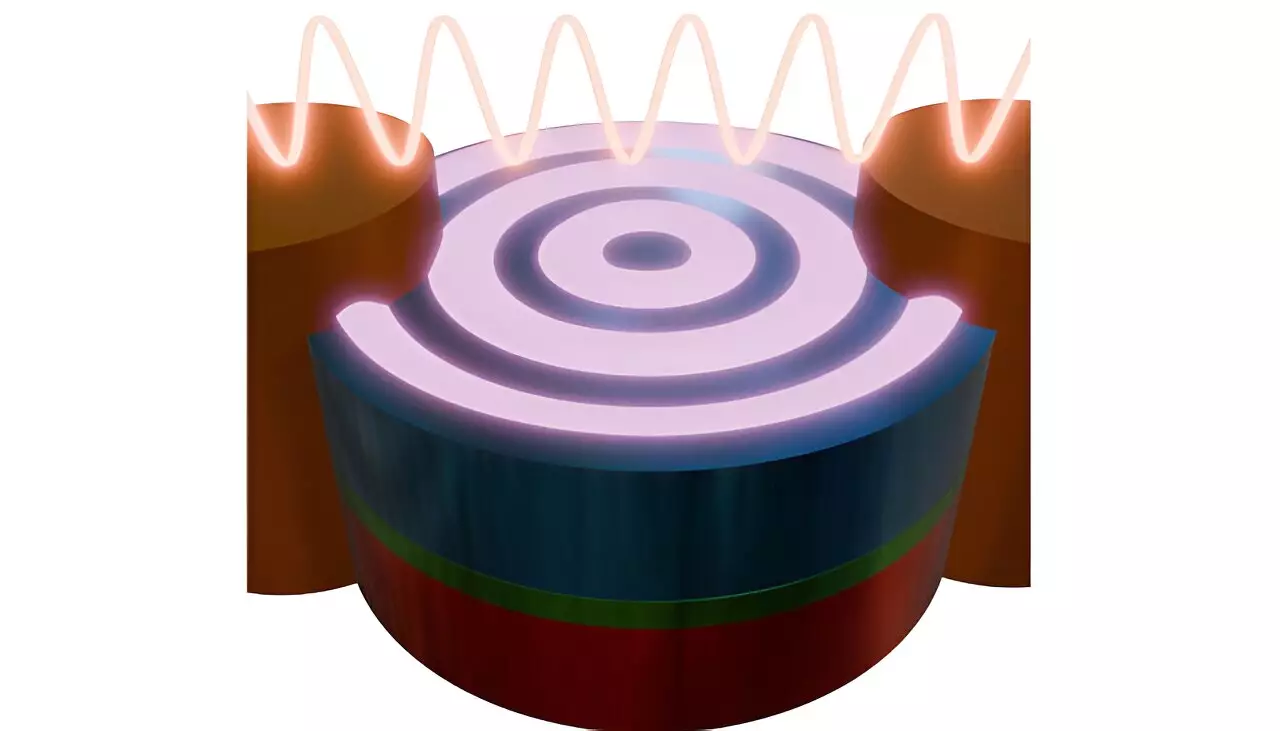The quest for more compact and energy-efficient computing systems is gaining momentum, driven by rapid technological advancement and ever-increasing demand for processing power. Recent research conducted by the University of Vienna in collaboration with the Max Planck Institute for Intelligent Systems and Helmholtz Centers aims to redefine the future of computing through a novel approach: reprogrammable magnonic circuits. This innovative study, published in Science Advances, heralds potential transformations in how we understand and implement computing architectures.
Modern computing relies heavily on transistors fabricated using complementary metal-oxide-semiconductor (CMOS) technology. These transistors have served as the foundation for today’s processors in computers and smartphones, but they are now facing significant challenges. As devices shrink in size, the physical constraints of current technology become more pronounced. High power consumption and energy losses associated with billions of transistors raise sustainability concerns, leading researchers to explore alternative methods for computation.
This is where the concept of magnons comes into play. Magnons are the quantized units of spin waves, akin to ripples in a pond generated by a stone’s descent into water. Instead of employing bulky transistors, magnonic circuits harness these spin waves to transmit energy and information with far greater efficiency. This groundbreaking paradigm shift could fundamentally alter the design of future computing devices.
The Mechanics of Spin Waves
Understanding how spin waves function is essential to appreciating their potential application in computing. Researchers have employed a compelling analogy: envision a lake and a stone creating ripples across its surface, symbolizing the generation and propagation of spin waves in magnetic materials. Sabri Koraltan, a leading figure in the study, highlights how these waves can efficiently transfer information over distances with reduced energy loss, an essential feature for next-generation computing.
The challenge lies in generating these spin waves effectively. High-performance magnonic devices require short-wavelength spin waves, which have proved difficult to fabricate with existing technologies. Traditional nano-antennas, while capable of generating these waves, need specialized clean-room environments and precise lithography techniques that are often inaccessible.
In a striking departure from conventional methods, the research team devised a simpler approach: they directed electric currents through synthetic ferrimagnetic materials adorned with swirling magnetic patterns. This method dramatically enhances the efficiency of spin-wave generation. According to Koraltan, the lateral alternating current geometry utilized in these synthetic systems enables high-efficiency spin-wave emissions, representing a major leap forward in the field.
This efficiency was further corroborated by advanced imaging techniques, including the ‘Maxymus’ X-ray microscope at the BESSY II electron synchrotron in Berlin, which allowed researchers to observe anticipated spin waves on a nanometer scale. These advancements not only validate the experimental methodologies but also showcase the research team’s innovative use of materials that can dynamically modify their magnetization, allowing for real-time steering of spin waves.
The ability to dynamically adjust the direction of spin waves introduces an unprecedented level of flexibility in how magnonic circuits can be utilized. This capability lays the groundwork for the development of reprogrammable magnonic devices, heralding a new era of adaptable computing systems. Dieter Süss, who played a crucial role in this research, emphasizes the significance of their new micromagnetic simulation software. By facilitating detailed large-scale simulations, researchers have gained deeper insights into the mechanisms driving efficient spin-wave excitation.
As the study indicates, these advancements in generating and controlling magnons could lead to significant breakthroughs in computing technology, paving the way for systems that are not only more efficient but also tailored to meet the evolving demands of users.
The findings from this collaborative study represent a transformative approach to computing that could alleviate the limitations imposed by traditional transistor-based technologies. The exploration of magnons opens up a realm of possibilities for creating advanced, energy-efficient devices that are more responsive to user needs. As researchers continue to push boundaries in this field, the potential for next-generation magnon-based technologies appears not just plausible but imminent—marking a pivotal shift in how we envision and interact with computing systems in the future.


Leave a Reply
You must be logged in to post a comment.